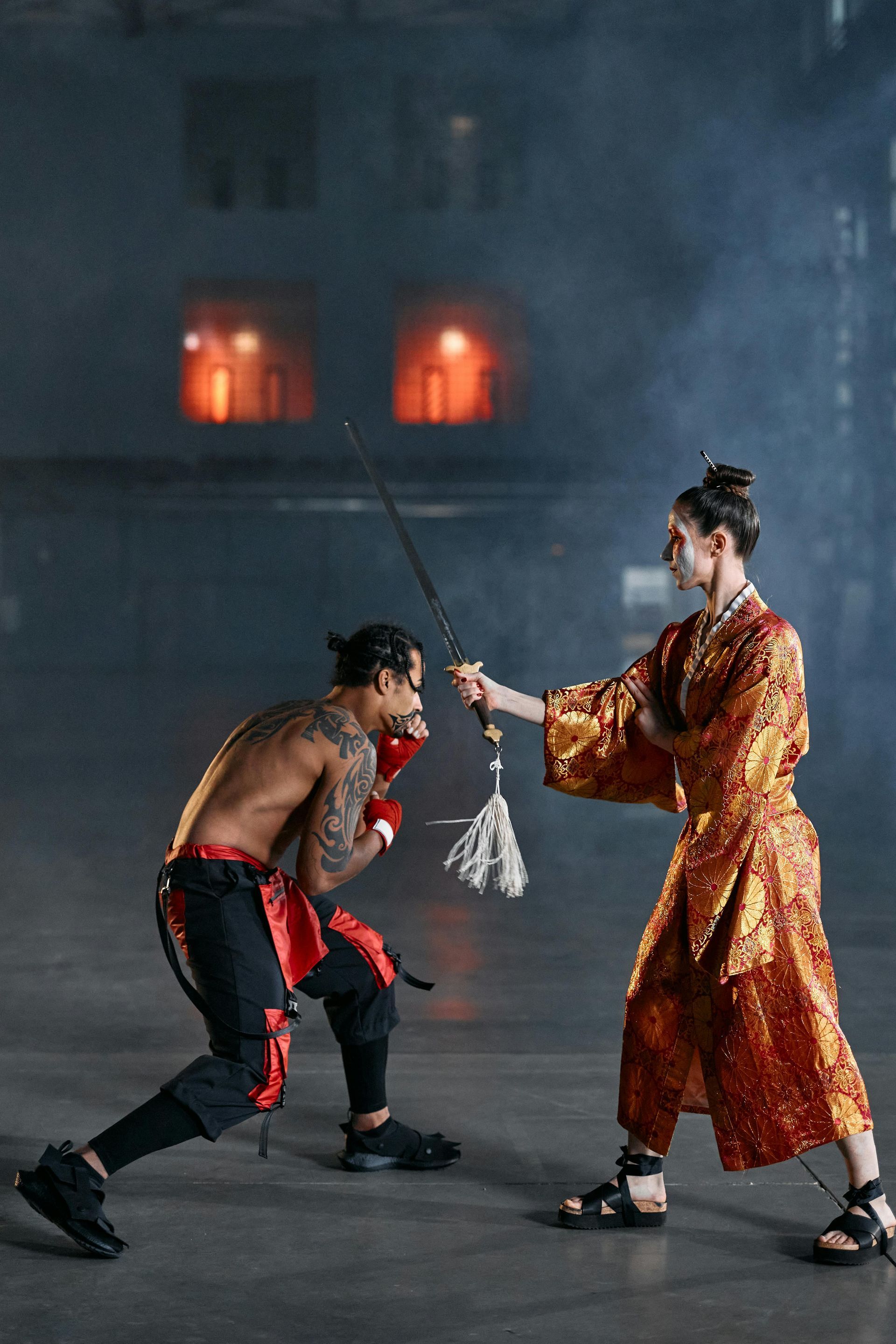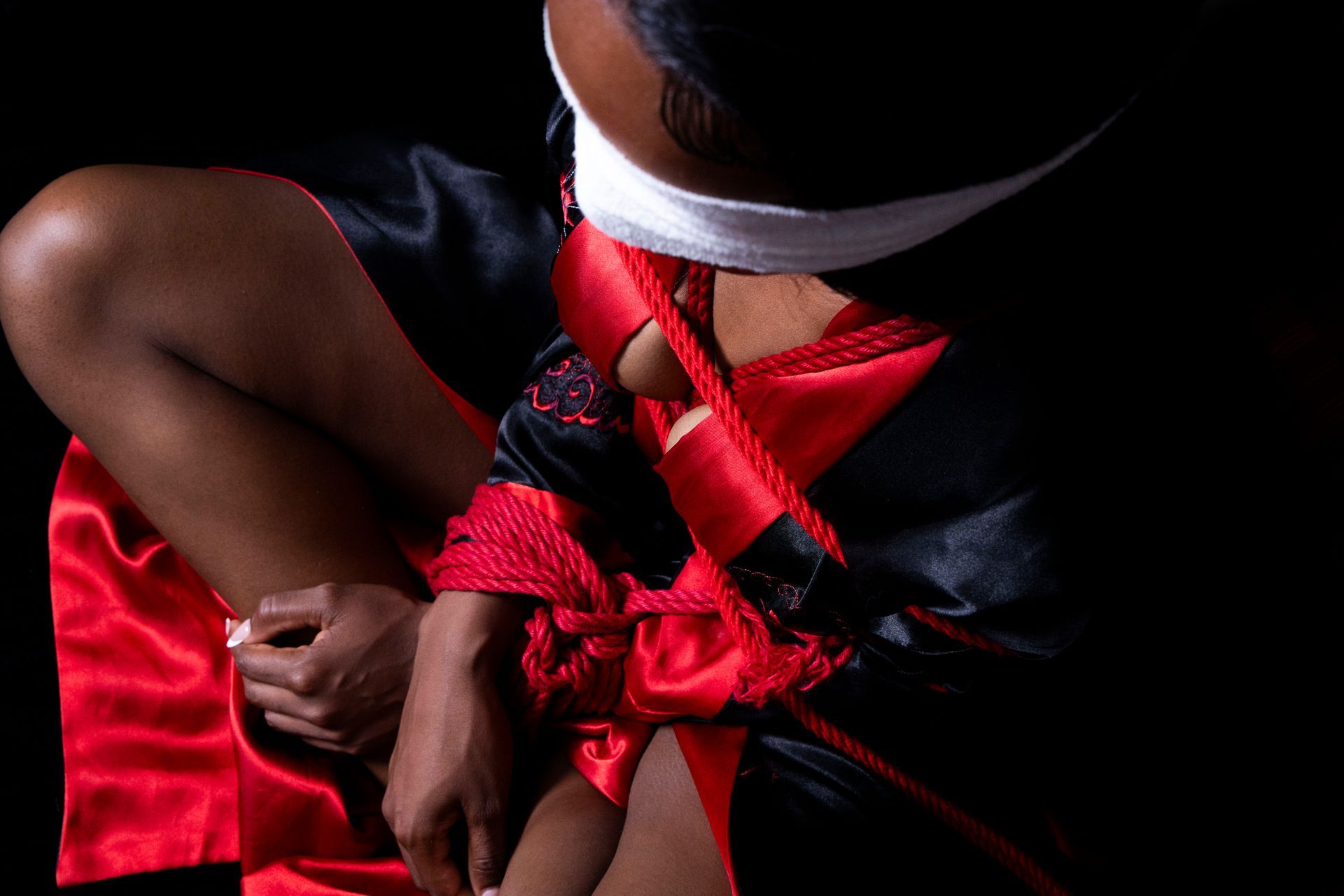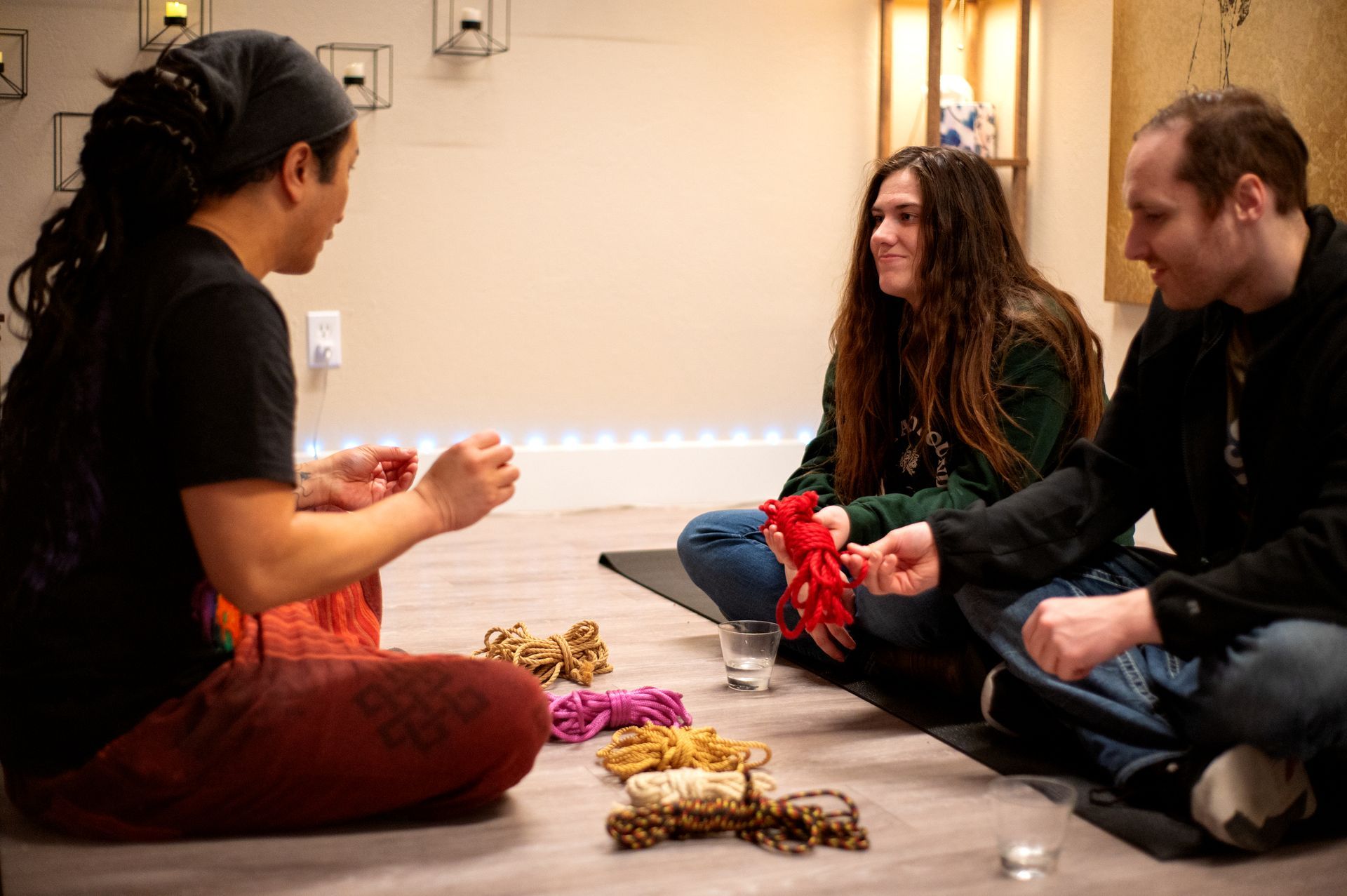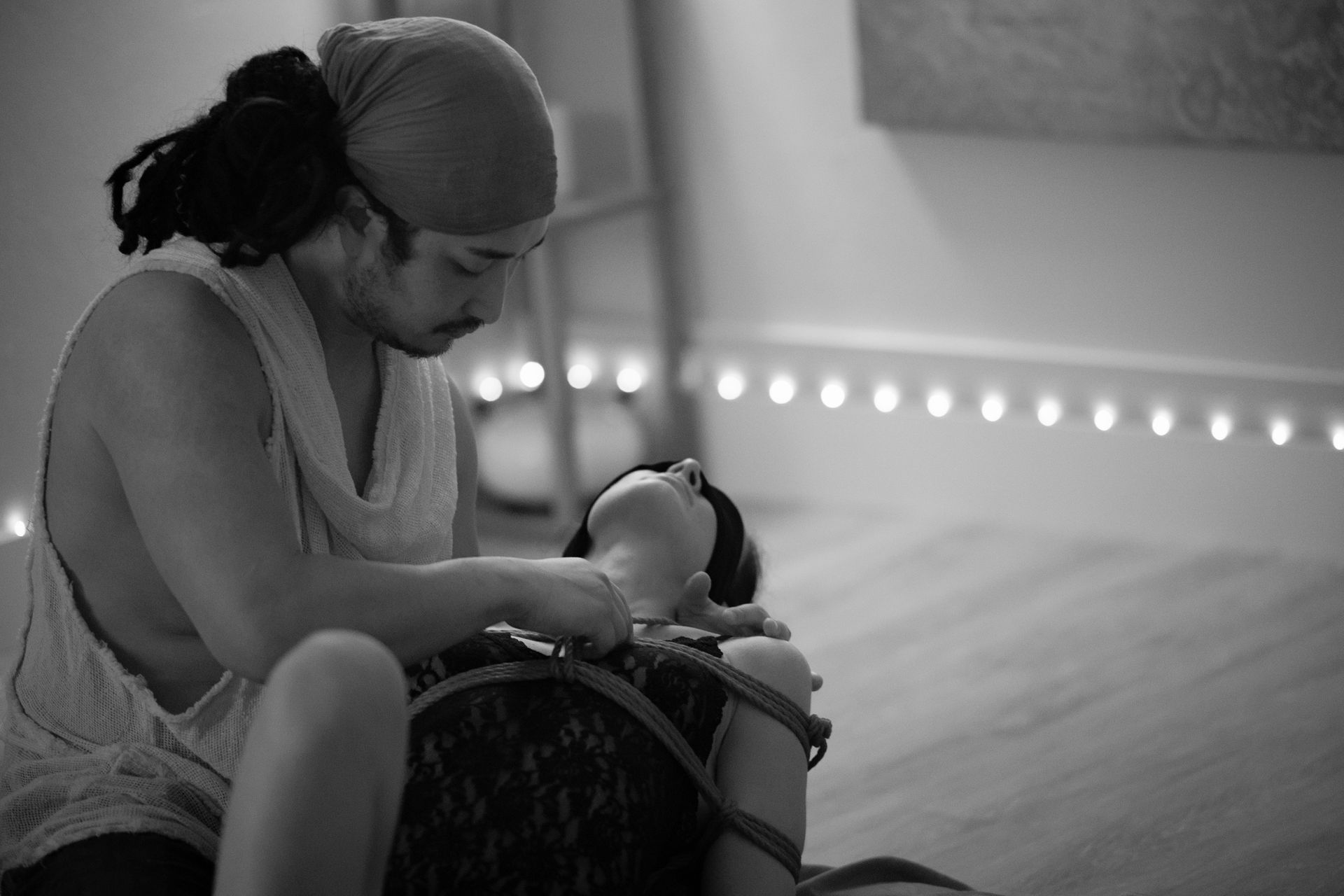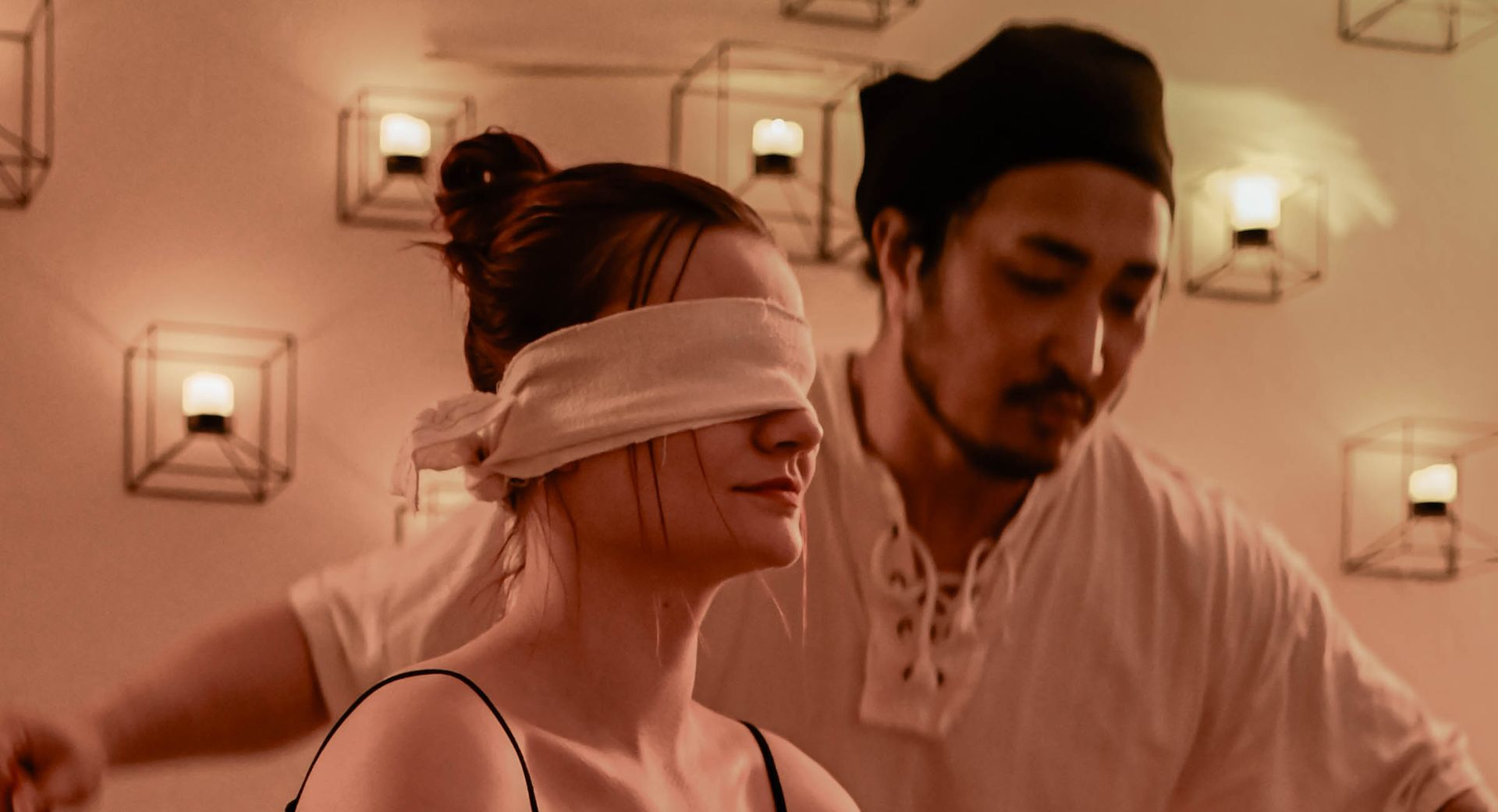Article
From Samurai Discipline to Sacred Tie: The Origins of Shibari
When most people first hear the word Shibari, they imagine rope as a tool of restraint — something sharp, controlling, or even painful. Yet if we travel back in history, rope carries a much deeper story. Shibari was born not from pleasure, but from discipline, and through centuries it transformed into an art of beauty, trust, and connection. Today, through Sacred Tie, it becomes something even more — a pathway to tenderness, safety, and creativity.
A Brief Timeline of Shibari’s Evolution
- 15th–17th Century (Sengoku & Edo periods): Samurai developed Hojojutsu, the martial art of restraining prisoners with rope. Every knot and pattern reflected discipline, order, and honor.
- 17th–19th Century (Edo period): With peace came creativity. Rope shifted from pure control into artistic expression. The aesthetics of binding, symmetry, and flow began to emerge in theater, performance, and erotic art.
- 20th Century: Rope became recognized as Shibari — an artistic practice blending sensuality, performance, and trust. It spread from Japan to the global stage, interpreted through different cultures and communities.
- 21st Century (Today): Shibari has blossomed worldwide. For some, it remains performance art; for others, a form of intimacy, meditation, or healing.
The Warrior’s Rope: Hojojutsu
In feudal Japan, rope was a weapon. Samurai practiced Hojojutsu to bind prisoners with precision. Each knot carried meaning — not just to secure, but to reflect hierarchy and dignity.
But as Japan entered the Edo period, rope began to soften. Artists and performers discovered its beauty. What was once a tool of discipline evolved into a language of expression.
From Restraint to Art
By the Edo era, Shibari had taken form as an art of aesthetics and intimacy. The human body became a canvas. Ropes highlighted curves, invited stillness, and revealed vulnerability. Shibari became less about holding someone down and more about lifting them into awareness.
- This shift — from control to connection — is the root of the art we know today.
The Modern Misunderstanding
In modern culture, Shibari is still often seen only through the lens of domination or pain. This narrow view misses its true depth: Shibari as a mindful, intentional practice of listening and responding.
It is here that
Sacred Tie emerges — a practice that reframes rope as not only art, but also
ritual, healing, and communion.
Rope as a Pathway to Connection
When rope touches skin, something subtle awakens. The body notices its posture. Breath becomes conscious. The partner’s presence sharpens.
Rope doesn’t just bind the outside; it stirs the inside. The outer lines awaken inner emotions — surrender, trust, release. Rope becomes a mirror, reflecting the truth between two people.
The Birth of Sacred Tie Shibari
Created by Ederson Syvongsa, Sacred Tie was born from a desire to blend the history of Shibari with the sacred traditions of ritual and healing. Drawing on his Lao heritage, Ederson saw rope not only as technique, but as ceremony. In Lao culture, threads and binding rituals symbolize healing, protection, and unity. Sacred Tie extends that wisdom into modern Shibari.
Through his journey as an artist, healer, and performer, Ederson redefined Shibari as:
- A practice of trust and consent
- A bridge between body, mind, and soul
- A living ritual where rope becomes the language of connection
In Sacred Tie, knots are not cages — they are prayers. The art is not about control, but about the union of two beings, breathing as one.
Sacred Tie Today
Sacred Tie Shibari is the continuation of rope’s timeless story. From samurai discipline to modern intimacy, it honors the rope’s history while guiding it into a new chapter: one of tenderness, safety, and shared transformation.
Through every knot, we honor the past. Through every breath, we honor connection. And in the space between tension and release, we rediscover rope as it has always been: a sacred reminder that we are bound not by force, but by trust, vulnerability, and love.
Signature Quote
“Rope is not what holds us down, but what lifts us into each other’s presence. In every knot we tie, we weave trust, breath, and soul into one sacred thread.”
Biblical Verses Resonating with Rope, Release, and Trust
- Release & New Opportunity
“To bind up the brokenhearted, to proclaim liberty to the captives, and the opening of the prison to those who are bound.” — Isaiah 61:1
Rope here can symbolize healing — the act of binding not to trap, but to mend and restore. - Surrender & Trust
“Trust in the Lord with all your heart and lean not on your own understanding.” — Proverbs 3:5
Like in rope practice, surrender means letting go of control and trusting the one holding the rope — just as we trust the divine presence guiding us. - Union & Becoming One
“And the two shall become one flesh. So they are no longer two, but one.” — Mark 10:8
Rope connection reflects this union — two people breathing, moving, and surrendering as if they are one being. - Release of Burdens
“Come to me, all who labor and are heavy laden, and I will give you rest.” — Matthew 11:28
Rope can be a ritual of release — surrendering to stillness, letting go of burdens, and finding rest in another’s embrace. - Binding in Love
“Above all, clothe yourselves with love, which binds everything together in perfect harmony.” — Colossians 3:14
Just as knots weave rope into patterns, love is the binding force that holds trust, healing, and connection in harmony.
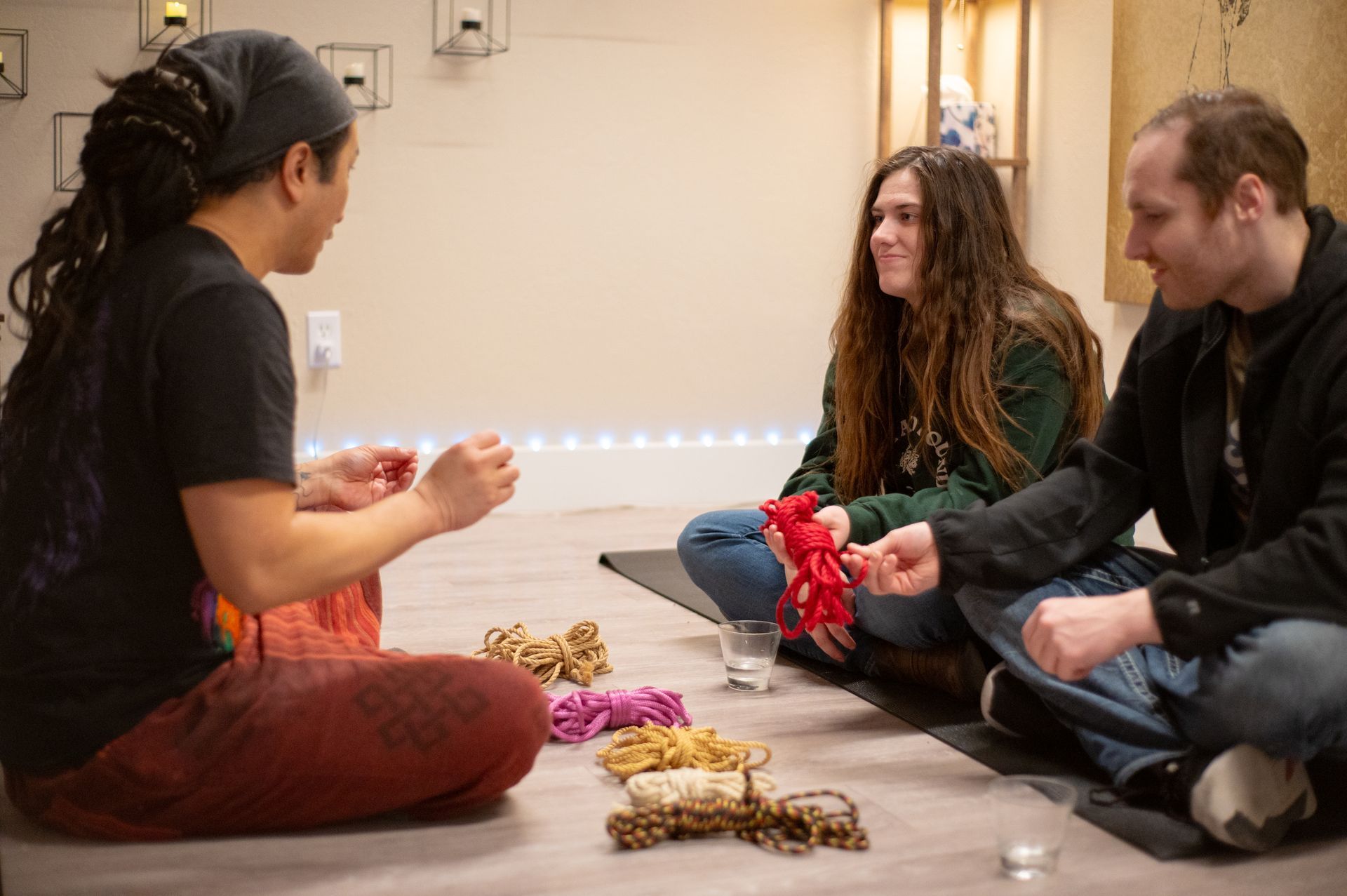
Sacred Tie Reflection
- In Biblical binding, the act is not about imprisonment but about unity and healing.
- In Biblical loosening, release is always followed by freedom and new opportunity.
- In Shibari as Sacred Tie, knots mirror both — the gentle embrace that holds us safe, and the release that opens us into renewal.
- Ederson Syvongsa, Creator of Sacred Tie Shibari -
share this
Related Articles
Related Articles
